Want Amaryllis But Not Red? Try These 8 White Amaryllis Varieties For The Ultimate Elegance
You’re probably familiar with the crisp red blooms of the traditional amaryllis – but if you feel like something more unusual and elegant, why not try white amaryllis?

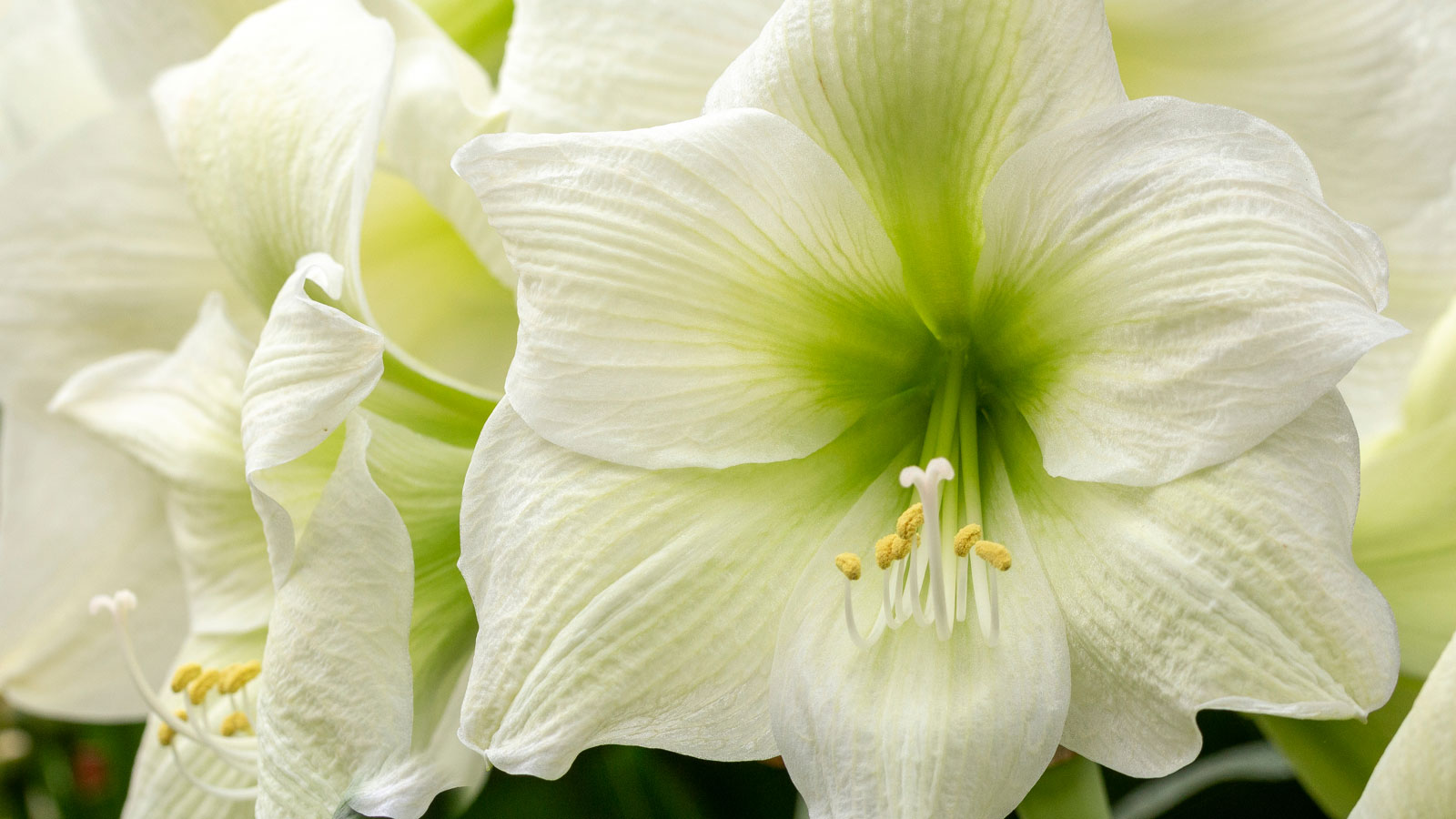
Amaryllis is a popular flowering bulb that’s typically grown indoors and forced to bloom in winter. The large, striking flowers that sit atop tall, straight stems bring cheer in the colder months. Traditionally, we tend to see lots of red types of amaryllis on display in windowsills and dining arrangements. However, new varieties of white amaryllis plants are changing the picture, both during the holidays and over winter.
Show the right amaryllis care and these winter beauties are easy to grow. Provide good potting soil, regular water and bright, indirect light, and the bulb will grow and bloom. You can even keep the bulbs dormant and get them to bloom again the following year. Here are some of the great new white amaryllis plant types to try for something a little different during the chillier months of the year.
Choosing the Best White Amaryllis Varieties
For lovers of white flowers to grow, the good news is that white amaryllis flowers are becoming easier to find, with new varieties available all the time. You can find white mixed with other colors, double white amaryllis flowers, and more besides.
In addition to variations of coloring and petal type, white amaryllis bulbs differ in how many stems and flowers they develop, how productively they bloom, and even their size. Here are some great ideas to get you started forcing bulbs this winter.
1. White Amadeus
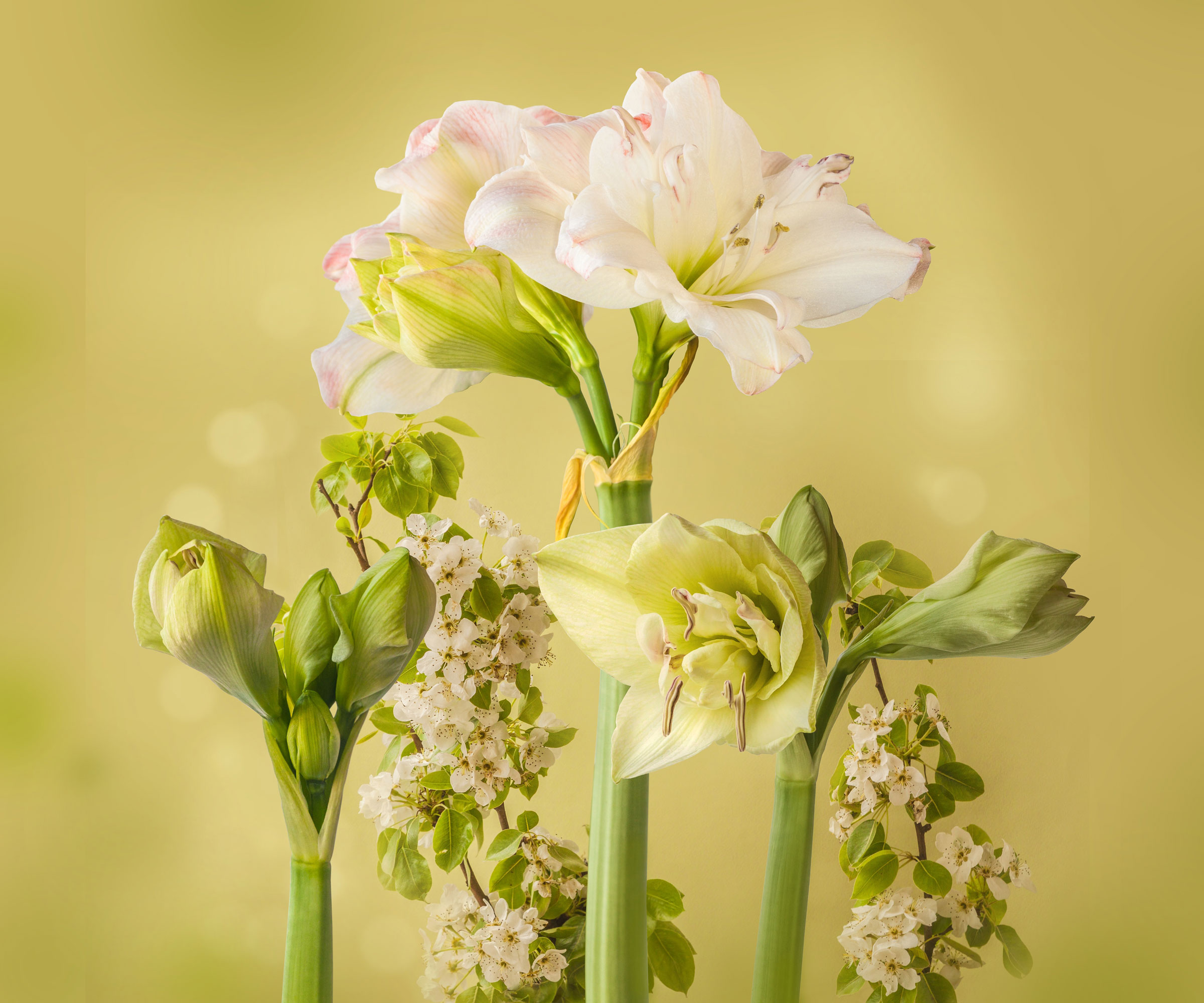
White Amadeus is another double-petalled amaryllis variety. The white is a little creamier and less pure white than Akiko's coloring. The flowers are very large with a little bit of green in the center. For anyone familiar with pink amaryllis varieties, Amadeus Candy is a similar variety with a blush of deep raspberry pink on the tips of the otherwise white petals. White Amadeus may have just a touch of pink on the tips. Both have flowers that can be as big as 10 inches (25cm) across.
2. Akiko
Like most amaryllis bulbs grown in indoor containers, Akiko belongs to the Hippeastrum genus, a group of flowers native to South America. Akiko is one of the purest white of all varieties with a touch of green in the throat of the flower. These are large, doubled-petalled blooms. Each bulb produces at least two stems with four flowers each. These striking white flowers make gorgeous winter indoor plants and look pretty alone or mixed with darker or brighter red amaryllis.
3. Mont Blanc
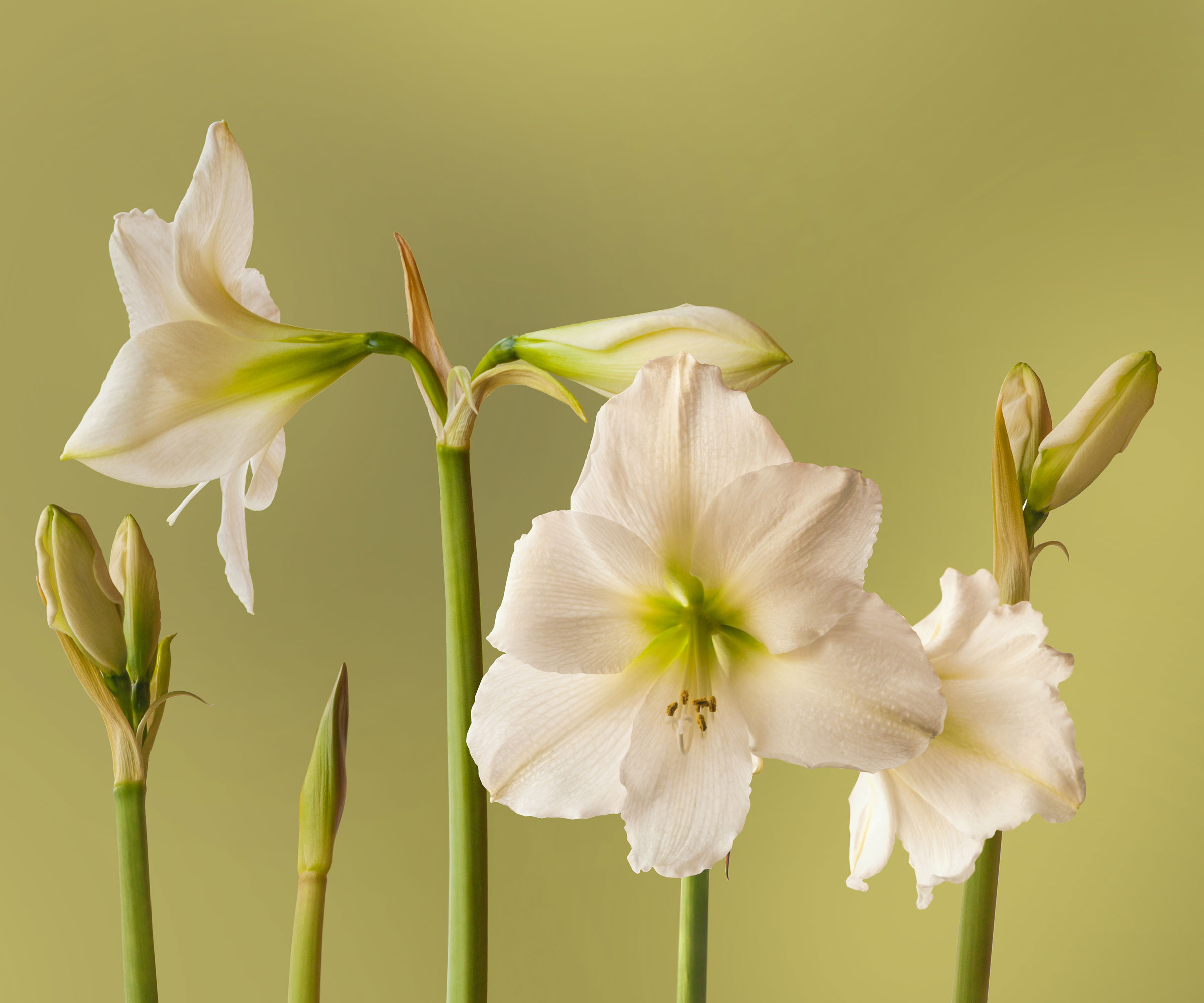
Another pure white stunner, Mont Blanc is a single-petalled white amaryllis flower with slightly ruffled edges and a pale, lime green center. The flowers are trumpet-shaped and look more like lilies than many other varieties. Each bulb produces multiple blooms on sturdy stems. If you love unusual cutting garden arrangements, these blooms make excellent cut flowers for ornamental displays.
4. White Garden
For a single-petalled variety with pristine white flowers touched by a little green in the throat, you can't go wrong with White Garden. This is a multiflora type, with each bulb producing more than one stem and multiple flowers. While the double-petalled white amaryllis varieties, like bearded white iris varieties, are showy and striking, the clean lines of this single-petalled amaryllis are very elegant. The flowers are smaller than those of many other varieties, at just about five inches (13cm) across.
Sign up for the Gardening Know How newsletter today and receive a free copy of our e-book "How to Grow Delicious Tomatoes".
5. Arctic Nymph
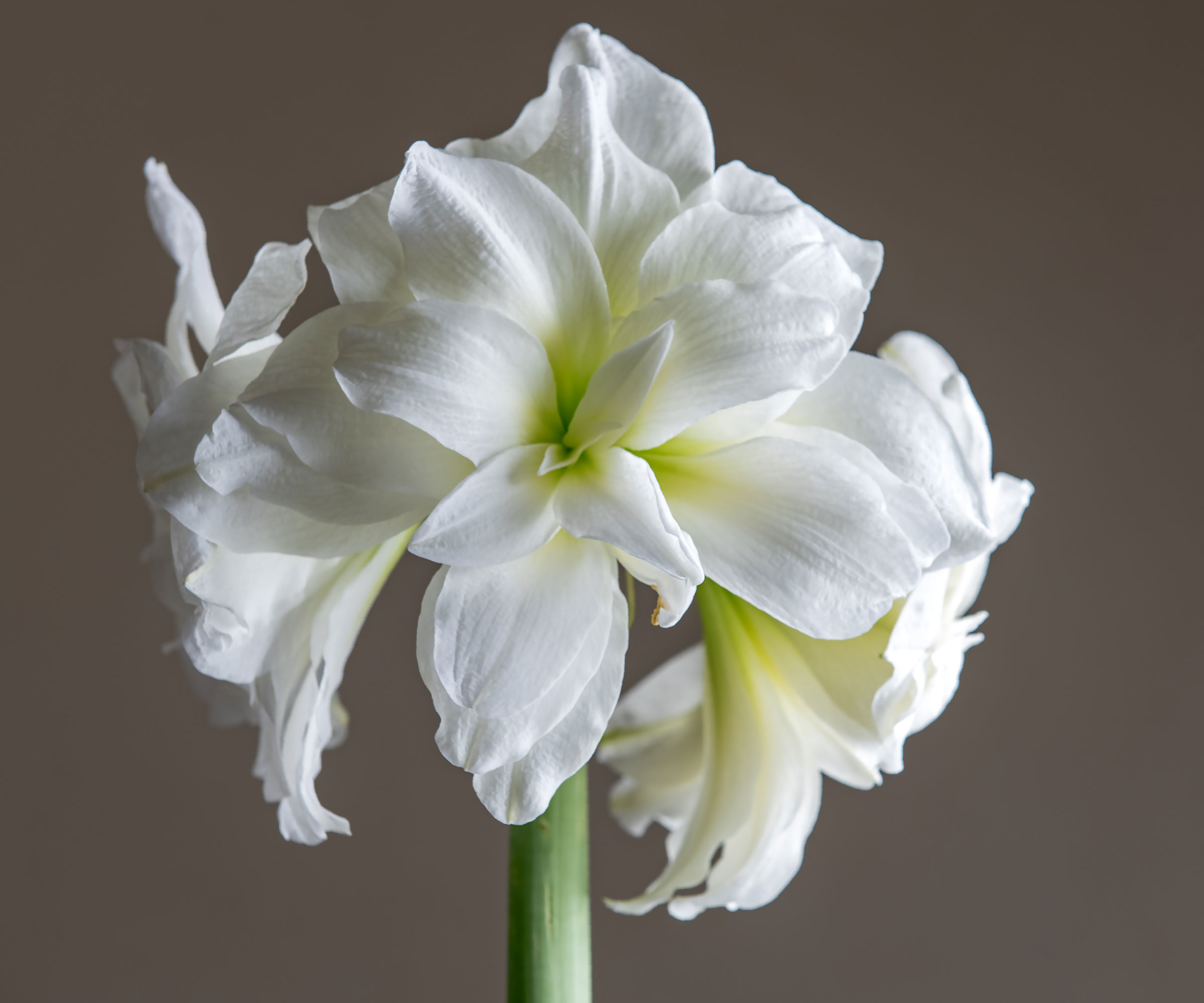
Nymph is a group of varieties developed to reliably produce large, double-petalled flowers on very sturdy stems. These properties have made them as popular as many high yield flowers, and they now come in different colors. The original Nymph is mostly white with pink stripes. Bright Nymph is similar to the original but with darker pink or red stripes. White Nymph is pure white, while Arctic Nymph has a snowy cast and a green throat.
6. Christmas Gift
Christmas Gift is another single-petalled variety but with bigger blooms, up to seven or eight inches (18-20cm) across. This breed is a highly impressive choice if you are after holiday amaryllis varieties to grow. The stems are tall and sturdy enough to hold the large flowers, growing up to 25 inches (64cm). As well as being a great holiday gift, this white amaryllis makes a pretty addition to holiday décor and blooms reliably.
7. Picotee
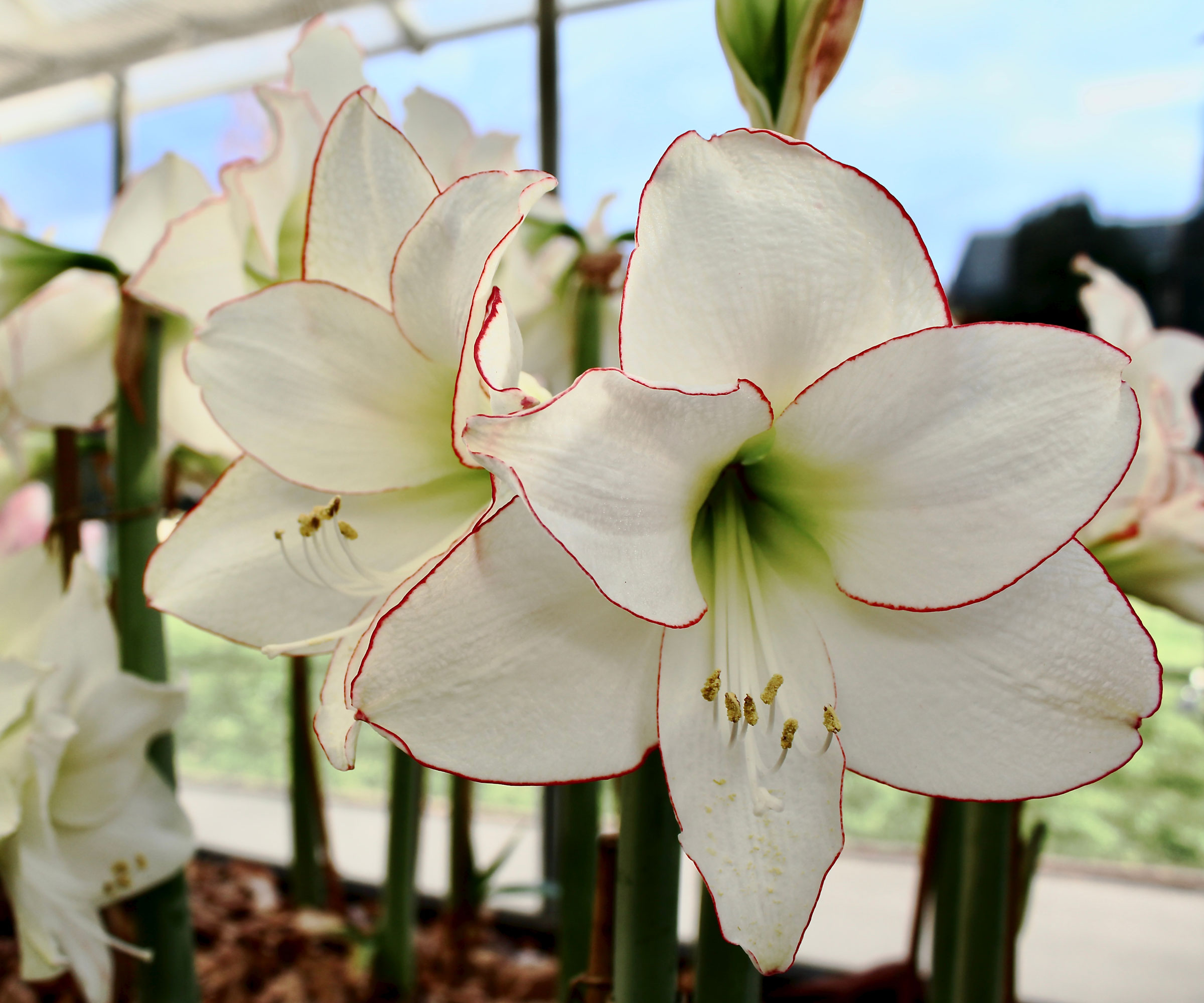
This is a uniquely colored amaryllis. It's single-petaled and pure white, with delicate red or pink edges. The colored margins are very thin as if drawn on by a fine point marker. They may have a little blush of pink in the middle of the petals as well. The flowers are four or five inches (10-13cm) wide.
8. Blossom Peacock
For growers who adore pink flowers as well as whites, choose Blossom Peacock for a little more pink with your white amaryllis. The double petals are mostly white with rosy, pink edges. They are not as full or dense as some double-petalled varieties, but this gives Blossom Peacock a more elegant look. Each amaryllis bulb produces two or three stems with up to six flowers each.

Mary Ellen Ellis has been gardening for over 20 years. With degrees in Chemistry and Biology, Mary Ellen's specialties are flowers, native plants, and herbs.